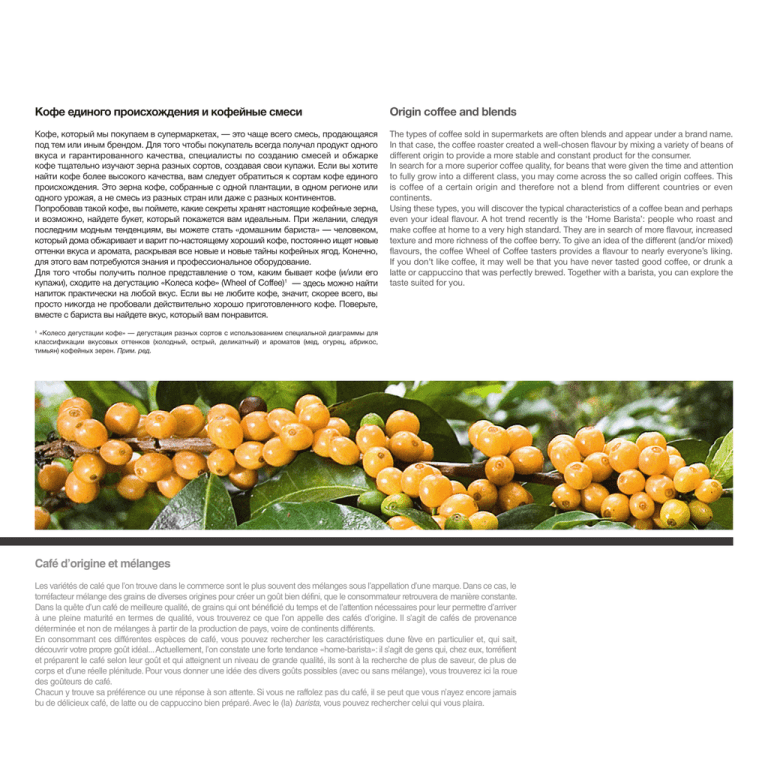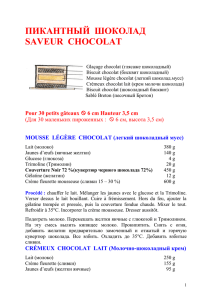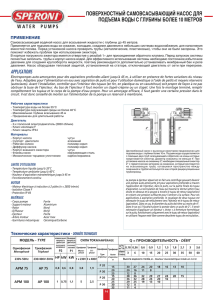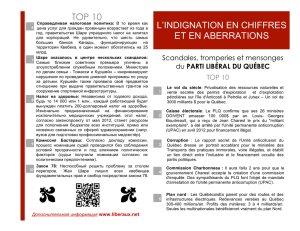Кофе единого происхождения и кофейные смеси
реклама

Кофе единого происхождения и кофейные смеси Origin coffee and blends Кофе, который мы покупаем в супермаркетах, — это чаще всего смесь, продающаяся под тем или иным брендом. Для того чтобы покупатель всегда получал продукт одного вкуса и гарантированного качества, специалисты по созданию смесей и обжарке кофе тщательно изучают зерна разных сортов, создавая свои купажи. Если вы хотите найти кофе более высокого качества, вам следует обратиться к сортам кофе единого происхождения. Это зерна кофе, собранные с одной плантации, в одном регионе или одного урожая, а не смесь из разных стран или даже с разных континентов. Попробовав такой кофе, вы поймете, какие секреты хранят настоящие кофейные зерна, и возможно, найдете букет, который покажется вам идеальным. При желании, следуя последним модным тенденциям, вы можете стать «домашним бариста» — человеком, который дома обжаривает и варит по-настоящему хороший кофе, постоянно ищет новые оттенки вкуса и аромата, раскрывая все новые и новые тайны кофейных ягод. Конечно, для этого вам потребуются знания и профессиональное оборудование. Для того чтобы получить полное представление о том, каким бывает кофе (и/или его купажи), сходите на дегустацию «Колеса кофе» (Wheel of Coffee)1 — здесь можно найти напиток практически на любой вкус. Если вы не любите кофе, значит, скорее всего, вы просто никогда не пробовали действительно хорошо приготовленного кофе. Поверьте, вместе с бариста вы найдете вкус, который вам понравится. The types of coffee sold in supermarkets are often blends and appear under a brand name. In that case, the coffee roaster created a well-chosen flavour by mixing a variety of beans of different origin to provide a more stable and constant product for the consumer. In search for a more superior coffee quality, for beans that were given the time and attention to fully grow into a different class, you may come across the so called origin coffees. This is coffee of a certain origin and therefore not a blend from different countries or even continents. Using these types, you will discover the typical characteristics of a coffee bean and perhaps even your ideal flavour. A hot trend recently is the ‘Home Barista’: people who roast and make coffee at home to a very high standard. They are in search of more flavour, increased texture and more richness of the coffee berry. To give an idea of the different (and/or mixed) flavours, the coffee Wheel of Coffee tasters provides a flavour to nearly everyone’s liking. If you don’t like coffee, it may well be that you have never tasted good coffee, or drunk a latte or cappuccino that was perfectly brewed. Together with a barista, you can explore the taste suited for you. «Колесо дегустации кофе» — дегустация разных сортов с использованием специальной диаграммы для классификации вкусовых оттенков (холодный, острый, деликатный) и ароматов (мед, огурец, абрикос, тимьян) кофейных зерен. Прим. ред. 1 Café d’origine et mélanges Les variétés de calé que l’on trouve dans le commerce sont le plus souvent des mélanges sous l’appellation d’une marque. Dans ce cas, le torréfacteur mélange des grains de diverses origines pour créer un goût bien défini, que le consommateur retrouvera de manière constante. Dans la quête d’un café de meilleure qualité, de grains qui ont bénéficié du temps et de l’attention nécessaires pour leur permettre d’arriver à une pleine maturité en termes de qualité, vous trouverez ce que l’on appelle des cafés d’origine. Il s’agit de cafés de provenance déterminée et non de mélanges à partir de la production de pays, voire de continents différents. En consommant ces différentes espèces de café, vous pouvez rechercher les caractéristiques dune fève en particulier et, qui sait, découvrir votre propre goût idéal... Actuellement, l’on constate une forte tendance «home-barista»: il s’agit de gens qui, chez eux, torréfient et préparent le café selon leur goût et qui atteignent un niveau de grande qualité, ils sont à la recherche de plus de saveur, de plus de corps et d’une réelle plénitude. Pour vous donner une idée des divers goûts possibles (avec ou sans mélange), vous trouverez ici la roue des goûteurs de café. Chacun y trouve sa préférence ou une réponse à son attente. Si vous ne raffolez pas du café, il se peut que vous n’ayez encore jamais bu de délicieux café, de latte ou de cappuccino bien préparé. Avec le (la) barista, vous pouvez rechercher celui qui vous plaira. ны Винный й к е ый ов ек д Са рош ис ах го р а ый ен р рех Жа йо и к ц Гре й ски иче м а ьз Бал рис е вы Фруктовые о об Б ки й Кислый Кислотный С выр лабоаже нны й ые в ехо Ор Травяные Ферментирование ный Хлеб е й Сбалансированный Конфет Обжаривание с сахаром Ароматы Карамельные Шоколадные ый Горький Резкий ый Сухая дистилляция ые нил Смолистые й й ик мф т ип ал вк Э ор а а кий ны сн Еж ев Ка ц ре ка ди н Тми й евы Дегт бак ый та Жженый Обугленный чн Трубо з Гво Пе др Ке Креозотовы оль ный Со е Фен арс сл я е чн Ма щи е тны ные Щ ел о ст ы ны аю ан Дым Пепельные к Пи ой ва око лад ейц е в ре но Шв ен г Со ты Угольные ый ш е тв рс Жгучий ский Тем н ни ка ущ Острые Ле ий ол я Пекар ьны См Грубый Со ло Кленовы й сироп Шок олад н Ва б Гру ж Мед Сиропные Соленый льн йтра Вя й Жарены ех р о лесной Жареный миндаль ные Вкусы Мягкий довы Соло Ореховые Сладкий Выдержанный Деликатны Не ик а Лу Яг од ны е Ци тру сов ые Ду ш исты е Цветочные ц ре у Ог Л ук ов ы Кислый нт Еж ев Аб ри ко с Яб ло ко Карда мон и тми н С е ме кори на андр а Ли м он Чайная роза Цветение кофе Цветочные Резкий ый ка Ед лый Тяже кий п Тер тр Ос Пи к но с Че а й Молоко Milk Le lait Вы когда-нибудь думали о том, сколько разных видов и оттенков вкуса у обычного молока? А между тем кофе и молоко идеально сочетаются только в том случае, если вы используете самые качественные продукты. Для опытного бариста качество молока не менее важно, чем качество кофейного зерна. На качество молока оказывает влияние все: состав корма, частота дойки, условия, в которых содержатся животные, способ сбора и дальнейшей обработки и даже климат. Чтобы качество было высоким, фермер обязан думать даже о таких вещах, как смена поля для выпаса, так как животные не могут оставаться на одном и том же поле круглый год; если же наступают холода, их следует содержать в стойле. Существует множество методов обработки молока, и чтобы оно не скисало и не меняло вкусовых качеств, необходимо соблюдать определенную технологию. Важно не только использовать хорошее оборудование, но и контролировать качество на каждом этапе обработки продукта. В этом процессе очень важны гигиена и постоянное внимание производителя к самым мелким деталям. Бариста сложно работать с молоком, качество которого постоянно меняется. Некоторые партии вообще могут иметь неподходящие для работы с кофе свойства. Поэтому при выборе молока важно обращать внимание не только на его вкус, но и на то, насколько стабильно качество поставляемого продукта. Have you ever thought about milk? About the different types and flavours? In order to reach the perfect coffee and milk combination, it is paramount that the most suitable milk and coffee is used. For a trained barista, the quality of milk is equally as important as the coffee. Milk is most definitely a natural product. The cattle feed affects the quality of the milk as well as other environmental and weather conditions which the farmer has to take into account. For example, the animals cannot remain in the same field all year round and, depending on temperature, must be kept in a shed or outside. This also has a significant influence on the milk production. A barista may experience problems when the milk is unstable and as a result changes flavour and quality. It is therefore best to be on the look-out for tasty but stable milk. The latter depends on several factors: the feed, the frequency of milking the animals and the processing afterwards. There are many different processing methods which all clearly affect the end product. In order to correctly process milk in a stable and delicate manner, the necessary technical input is required from the factory. Not only is expensive machinery essential but also permanent inspection and monitoring, as milk easily turns sour. Hygiene and traceability are vitally important but demand continuous investment from the dairy factory. Avez-vous bien réfléchi à la question du lait? Aux différentes sortes de lait et à leur goût spécifique? Les préparations de café au fait ne peuvent se faire que si l’on emploie pour cela le café et le lait les plus appropriés. Pour un(e) barista éprouvé(e), la qualité du lait joue un rôle tout aussi important que celle du café. Le lait est par excellence un produit naturel. Les aliments pour bétail ont une influence sur la qualité du lait et l’éleveur doit aussi, entre autres, tenir compte du milieu et des conditions climatiques. Le bétail ne peut pas rester une année durant dans les mêmes pâtures et, suivant la température extérieure, il sera en prairie ou à rétable. Ceci a également une influence sur la production laitière. Un(e) barista peut avoir des difficultés si la qualité du lait est changeante, en goût ou en qualité. Il ou elle préférera donc se tourner vers un lait de qualité constante. Cette dernière dépend de divers facteurs: le fourrage, la fréquence de la traite et le traitement qui s’ensuit. Différents processus existent qui, tous, ont une influence sur le résultat final. Une bonne approche du traitement du lait pour obtenir de celui-ci une qualité haute et constante, exige un effort sur le plan de la technique de production. Ici nous ne parlons pas seulement de machines coûteuses, mais aussi d’un suivi et d’un contrôie, ce dernier ayant une grande importance car le lait surit rapidement. L’hygiène et ta traçabilité sont également essentielles mais exigent un investissement indispensable de la part du producteur laitier. 45 Шаг за шагом Розетта Взбитое молоко Правильно взбитое молоко — сливочное, густое, с шелковистой глянцевой поверхностью, с нежным и слегка сладковатым вкусом, больше похожим на вкус взбитых сливок, чем обычного молока. В процессе взбивания молока нужно следить, чтобы не образовывались крупные, похожие на мыльную пену пузыри воздуха. Мелкие, едва видимые, плотно прилегающие друг к другу пузырьки гораздо дольше сохранят правильную текстуру. Чтобы получить великолепный результат, нужно точно соблюдать технологию, выдерживать правильную температуру, использовать хорошее оборудование и, конечно, брать молоко самого высокого качества. Кроме того, я советую всегда использовать охлажденное молоко. Молоко, технология производства или приготовления которого была нарушена, никогда не будет нужной текстуры и температуры, без чего пена не получится стойкой, гладкой и приятной на вкус. Плохо взбитое молоко никогда не позволит создать красивое произведение латте-арт. Взбитое молоко — это всего лишь молоко с воздухом, но важно то, каким способом вы их соедините. Если нагреть молоко слишком сильно (выше 72 C), его вкус изменится: молоко содержит натуральный сахар, структура которого при слишком высокой температуре изменяется. Если молоко взбивать при температуре ниже 60°, оно не раскроет свой вкус и потеряет сладость, к тому же вы не получите напиток идеальной температуры. Frothed milk La mousse de lait The perfect correctly frothed milk is creamy, thick, rich, silky smooth, rich in texture and contains microfoam. Frothed milk will resemble something similar to lightly whipped cream rather than foam or simply liquid milk. Entirely incorrect are large air bubbles, similar to bath foam. The small, compact micro bubbles that stick to each other retain their strength and therefore texture much longer. In order to reach this magnificent result, optimal steaming, using the correct technique and temperature, suitable equipment and the best milk, is a must. Choosing a quality ingredient is naturally a deciding factor, and it is advisable to always start with cooled milk. In fact, frothed milk is nothing more than milk with a little air. The difference lies in the method that is used to combine those two. When heated too high (from 72°C), the flavour of milk changes due to the natural sugars present in milk that change their structure at a high temperature. When the milk is steamed only below 60°C, it will not uncover its inherent richness, the sweetness of the milk will be missing and the perfect drinking temperature will not be obtained. Therefore, under or over steaming will only happen if the customer explicitly asks and with the necessary goodwill of the barista. In any other case, it would be a shame to misuse the milk. It can be compared to bad cooking due to lack of skill. The person behind the machine is equally as important to the end result as the ingredient. As with every reputable chef, it is important for a barista to get more out of one product. Thanks to the correct use of qualitative milk, it can be optimised and all its goodness preserved. Sadly, lack of skill leads to the reverse. Incorrectly produced or manipulated milk will never reach its desired texture, flavour and temperature which contribute to the richness and sweet smoothness of the ingredient. It goes without saying that badly frothed milk will never create beautiful latte art. It is of utmost importance that the milk contains microfoam when steamed. La perfection d’une belle mousse de lait: crémeuse, onctueuse, pleine, d’une brillance soyeuse, riche en texture et soufflée en micro-bulles. La mousse de lait ressemble plus à une ïème légèrement battue qu’à l’écume d’un lait ordinaire. Les bulles d’air analogues à celles du bainmousse sont à proscrire. Les micro-bulles, soudées les unes aux autres, conservent bien plus longtemps leur fermeté et donc leur consistance. Pour atteindre ce superbe résultat, le lait doit être chauffé de façon optimale: technique et température adaptées, l’appareil approprié et la sélection du meilleur lait. Le choix d’un ingrédient de qualité joue évidemment un rôle important et nous conseillons de toujours démarrer avec du lait réfrigéré. En fait, la mousse de lait n’est rien d’autre que du lait et de l’air. C’est la manière dont le lait et l’air sont intégrés l’un à l’autre qui fait la différence. Si l’on chauffe à l’excès (plus de 72°C) le lait acquiert un autre goût. Ceci est dû notamment à la présence naturelle dans le lait de sucres qui occasionnent un changement de structure lors d’une température trop élevée. Au contraire, lorsque le lait est chauffé à une température inférieure à 60°C, il ne sera pas complètement mis en valeur et ne développera pas tout son potentiel. Un réchauffement insuffisant ne permet pas de développer la pleine saveur du lait ni d’obtenir la température la plus agréable pour te boire. Le faire mousser trop chaud ou trop froid ne se fait donc que sur demande expresse du client et pour autant que le (la) barète soit de bonne volonté. Dans tout autre cas, il est regrettable de traiter le lait de manière incorrecte. On peut comparer cela au fait ds mal cuisiner par manque d’habileté. La personne qui se tient derrière la machine a autant d’importance pour le résultat que l’ingrédient lui-même. Comme tout bon maitre queux, le (la) barista souhaite tirer le meilleur parti d’un produit. Une manipulation correcte d’un lait de qualité permet d’optimaliser et de valoriser le produit. Malheureusement, un manque de connaissance entraîne l’effet inverse. Le lait produit incorrectement ou mal manipulé n’atteindra jamais la texture, le goût ou la température souhaités qui procurent à cet ingrédient sa pleine richesse et sa saveur sucrée. Il est évident qu’une mauvaise mousse de lait ne deviendra jamais un beau Latte Art. Pour cela il est indispensable que Se îait contienne des micro-bulles après réchauffement. 51 Человек, стоящий у кофемашины, имеет такое же значение для конечного результата, как и ингредиенты, из которых он готовит напиток. Бариста, подобно любому повару с безупречной репутацией, стремится извлечь из продуктов максимум их возможностей. Используя качественное молоко, можно не только получить наилучший результат, но и сохранить все ценные свойства продукта. Лично я предпочитаю пользоваться цельным молоком: в нем присутствует вся та гармония мягкости и вкуса, которые идеально сочетаются с букетом хорошо приготовленного эспрессо. Но даже если вы возьмете самое лучшее молоко, желаемый результат получить не так просто. Внешний вид и вкус напитка зависит от того, как вы будете его нагревать: на плите, в микроволновой печи, с помощью бытового стимера или с использованием стимера кофемашины эспрессо. Последний способ лучше всего позволяет взбить молоко в мелкую пену. Не все профессиональные кофемашины обеспечивают необходимое давление пара и позволяют в достаточной степени им управлять. Поэтому мой совет: выбирайте качественные бренды. Принцип приготовления прост: используя силу и температуру стимера, взбивайте молоко в питчере1, поворачивая его по кругу. Вращательное движение необходимо, чтобы воздух попадал в молоко, пока оно подогревается до нужной температуры. Для того чтобы взбить крепкую молочную пену без крупных пузырей воздуха, вам потребуются терпение, практика и желание добиться успеха. Пенистая консистенция придает молоку шелковое сияние и божественный мягкий вкус, приятно ласкающий язык. Молоко, когда вы его наливаете, выглядит как немного взбитый, но все еще жидкий крем. Если молоко взбито правильно, то небольшая часть пены опустится на дно чашки и останется там до самого последнего глотка. Выпив кофе, вы насладитесь им как мини-десертом. Ваш напиток — это уже не просто чашка кофе с молоком, это искусство, способное подарить настоящее эмоциональное переживание. Любой вид кофе можно подать с молоком так, что он приобретет собственный характер. Несомненно, что при одинаковом объеме напиток из зерен, обладающих фруктовым букетом, будет отличаться от кофе с пряным вкусом. Но есть и другие отличия, связанные со вкусом. Например, между латте и латте маккиато. В первом случае кофе уже смешан с молоком, поэтому вкус получается сглаженным, без четких оттенков чистого кофе или молока. В латте маккиато эспрессо скрыт под слоем взбитого молока, и потому его вкус ощущается сильнее. Этот напиток скорее всего понравится тем, кто предпочитает чтото «покофейнее». Previously, we briefly mentioned the big difference between top quality milk and other milk. This starts with the farmer and continues all the way to the latte. Personally, I prefer to use whole milk: it consists of the perfect balance between smooth texture and flavour which forms an ideal mix with the richness of a perfectly brewed aromatic espresso. Yet, it is technically challenging to obtain the desired result, even with the best milk. The heating method will always affect the end result and flavour: on a cooker, in the microwave, with a commonly used steamer or simply by using the pressurised steam of a quality espresso machine. To achieve the delightful texture of frothed milk with microfoam, the latter is preferred. Not all professional machines supply the desired power and control, so note the differences between brands.The principle is straightforward: use the power and temperature of the steamer to froth the milk in the jug, applying a circular movement. Use this spinning movement to add air to the milk, as it gradually acquires the right temperature. Theoretically, more power means better control and therefore better result. In real terms, hours of practice, patience and passion are required to create milk with microfoam instead of large air bubbles. This texture not only provides the milk with a silky shine and compactness but also a divine flavour and smooth feeling in the mouth. If successful, the milk when poured will look like lightly whipped though still fluid cream. The beauty of correctly steamed and poured milk is that the pattern will also sink to the bottom of the cup, resulting in a certain amount of froth to be left at the end. After drinking the coffee, the remaining foam can be proverbially enjoyed as a little dessert. A pattern that lasts until the final sip transforms the drink into much more than coffee with milk. It turns a latte into an experience. Art in a cup. It is possible to present every milk based coffee with its own character. They may not only differ due to volume (single shot of coffee vs. double) but also the selected coffee. It is only natural that a fruity coffee will render a different end result to a sweet or spicy type, even with the same volume. The amount of foam can also make a difference: not everyone loves a small or large amount of frothed milk. This can be easily adjusted by increasing or decreasing the volume of milk when steaming. Furthermore, there are other differences, also in flavour: for example, between a latte and latte macchiato. With a latte, the coffee is already mixed with the milk. As a result, the coffee won’t taste purely of coffee, and the same goes for the milk. If more coffee is what you prefer, a latte macchiato is a better option. The espresso is present underneath the layer of frothed milk and is thus more noticeable in flavour. Nous avons déjà parlé précédemment de la grands différence entre un lait de qualité et un autre lait. Cela démarre chez l’éleveur et finit dans le latte. Moi-même, je travaille de préférence avec du lait entier: il donne le plus juste équilibre entre consistance et goût, se combine idéalement avec la richesse d’un expresso aromatique parfaitement préparé. Et pourtant, il reste techniquement assez difficife d’obtenir le résultat souhaité, même avec le meilleur lait. La manière choisie pour chauffer le lait débouche chaque fois sur un résultat différent et sur un autre goût: que ce soit à feu doux, au four à micro-ondes, avec un appareil à vapeur courant, ou grâce à la pression d’un bon appareil à expresso. Pour obtenir la magnifique texture de la mousse de lait avec ses micro-bulles, c’est avec ce dernier qu’il est préférable de travailler. Beaucoup d’autres appareils professionnels ne procurent absolument pas la puissance et le contrôle souhaités. Soyez attentif aux différences des unes et des autres marques d’appareils. Le principe est simple: employez la puissance et la température de l’appareil pour mettre le lait dans la petite cruche tout en effectuant un mouvement de rotation. Utilisez alors ce mouvement continu pour ajouter de l’air dans le lait tandis que vous mélangez, jusqu’à atteindre la température souhaitée. La théorie est la suivante: plus le mouvement est serré, mieux on garde le contrôle et plus le résultat sera meilleur. Dans la pratique, il faut beaucoup d’exercice, de patience et d’amour pour créer un lait empli de microbulles et non de grosses bulles d’air. Cette texture ne donne pas seulement un lait brillant et compact, mais lui procure aussi un goût délicieux et fondant dans la bouche. Lorsque tout se passe bien, le lait, lorsqu’on le verse, apparaît comme une crème légèrement battue et liquide. Ce qui est particulièrement joli avec du lait bien mousseux que l’on verse, c’est qu’il va ainsi former un dessin dans la tasse et qu’un peu de mousse de lait persistera jusqu’à la fin. Après avoir bu le café, celle-ci pourra être dégustée à la petite cuiller comme un dessert légendaire. Le dessin qui subsiste fait que la boisson n’est plus seulement un café au lait: c’est une expérience latte unique, de l’art dans une tasse. Il est possible de donner un caractère propre à toute boisson à base de café au lait. La différence peut provenir du volume (une ou deux doses de café), mais aussi du café sélectionné. En toute logique, même à volume comparable, un café fruité donnera un autre résultat final qu’une variété douce ou épicée. L’on peut aussi jouer avec plus ou moins de mousse de lait: c’est en fonction du goût de chacun qu’on en règle la quantité lors de la préparation. Il existe encore d’autres différences, dans le goût notamment: par exemple entre un latte et un latte macchiato. Dans le premier, le café est d’emblée mélangé au lait, de sorte que tes goûts de l’un et de l’autre ne sont pas clairement distincts. Si vous voulez renforcer le goût du café, choisissez plutôt un latte macchiato. Питчер — один из инструментов бариста, емкость для взби­ вания молока. Прим. ред. 1 55 Правильно сваренный из качественных ингредиентов латте или капучино не требует добавок (сахара, сиропа или меда). Конечно, кто-то может предпочитать более сладкий вкус — в любом напитке. Но если основа хорошо сварена, то каждая добавка становится очень заметной — даже щепотка сахара делает кофе ощутимо слаще. Если же напиток приготовлен неправильно (например, вы взяли пережженный кофе, слишком горячее молоко или взбили крупные пузыри вместо мелкой пены), то для получения того же результата потребуется больше сахара. Я не хочу этим сказать, что вкусовые добавки не придадут новый оттенок вашему напитку. Напротив, они могут стать хорошим дополнением к кофе и молоку. Например, изысканный латте хорошо сочетается с медом, а также с пряным, ореховым или даже перечным вкусом. Любая вариация — вопрос лишь личных предпочтений. Раскрыть новые свойства и возможности обычных продуктов вам поможет консультация хорошего бариста. If correctly brewed, using quality ingredients and reliable machines, a latte or cappuccino will not require additives (sugar, syrups or honey). Of course, the customer may prefer a sweet version. By correctly processing the basic ingredients, more can be obtained using less: if the basis is correctly brewed, every additive will be clearly noticeable. The tiniest amount of sugar will immediately make the coffee sweeter. By contrast, if the coffee was made incorrectly (for example, by using burnt coffee, too hot a milk or large bubbles instead of microfoam), more sweetness will be required to obtain the same result. This does not mean that a tasty additive cannot add flavour. An exquisite latte blends well with honey, spicy or even nutty or peppery flavours. These types of additives complement the combination of coffee and milk and are therefore simply a matter of personal preference. In consultation with a specialist or expert (the barista), every day products such as coffee and milk can reach a whole other dimension. Lorsqu’il est bien fait, avec des ingrédients de qualité et un appareil approprié, le latte ou le cappuccino n’ont pas besoin d’ajouts (sucre, sirop ou miel). Le consommateur peut évidemment faire le choix d’une version sucrée. Par une manipulation correcte des ingrédients de base, on peut obtenir plus en partant de moins: si la base est bien agencée, chaque ajout est perceptible et il faut peu de sucre pour l’adoucir. Au contraire, avec une mauvaise préparation (par exemple l’utilisation de café brûlé, de lait trop chaud ou de grosses bulles d’air au lieu de micro-bulles), il faut plus d’édulcorant pour obtenir le même effet. Ce qui précède ne veut nullement dire que l’apport d’un goût agréable ne donne pas de valeur ajoutée. Un latte délicieux peut tout à fait s’accommoder de miel, d’épices et même d’un goût de noix ou de poivre. De tels ajouts complètent bien la combinaison café-lait et relèvent donc d’une question de goût personnel, Avec la collaboration d’un spécialiste ou d’un homme de métier (barista) des produits omniprésents tels que le café et le lait acquièrent une toute autre dimension. 57 И более того And there is more Mais ce n’est pas tout Комбинировать кофе можно не только с молоком. Он прекрасно сочетается с самыми разными продуктами: с алкоголем, с маринадами, кофе удивительно оттеняет вкус мороженого или десертов. Большой популярностью в летний сезон пользуется кофе со льдом. Для того чтобы приготовить идеальный эспрессо со льдом, вам потребуется качественный кофе и кофемашина эспрессо. Чтобы сохранить вкус хорошо сваренного кофе, его нужно очень быстро охладить. Для моментального, или «шокового», охлаждения налейте кофе в небольшой стакан с двумя кубиками льда или смешайте лед с готовым кофе (при этом можно добавить молоко или сироп). Моментально охладить кофе можно, используя «бостонский шейкер» (шейкер для коктейлей, состоящий из двух частей). Для этого заполните его достаточным количеством твердого льда, вылейте на лед эспрессо, закройте шейкер и несколько раз встряхните его сильными, амплитудными движениями. Затем сразу вылейте кофе, чтобы он не смешался с водой. Если вы используете качественный лед, то он почти не растает. Холодный кофе можно добавлять в коктейли и другие напитки. Очень важно не затягивать процесс охлаждения, так как кофе станет горьким и будет плохо сочетаться с другими ингредиентами. There are many more combinations possible than just coffee and milk. Coffee blends perfectly with alcohol and works amazingly in dressings or marinades, with ice cream, in desserts etc. Iced coffee for example, is easily made and always a favourite in summer. Quality coffee is essential when making the perfect iced coffee, as well as the use of an espresso machine. To optimally keep the well brewed coffee, it is important to cool it as quickly as possible. This literally means instant cooling or shock cooling by pouring the coffee into a small glass with two ice cubes. Another option is to blend the ice with the coffee (and possibly also the milk), adding syrup if so desired. To instantly cool an espresso without changing its flavour too much, you fill a large shaker or Boston shaker (cocktail shaker consisting of two parts) with plenty of solid ice. Pour the espresso over the ice, close the shaker and shake hard using long movements. If quality ice is used, it should hardly, if at all, melt. Immediately pour the coffee out after shaking to avoid further watering down. The iced coffee can now be used in cocktails or other drinks and dishes. If the cooling process takes too long, the coffee will become more bitter and therefore difficult to combine. Il existe bien entendu encore bien d’autres possibilités que la simple combinaison café et lait Le café est un ingrédient délicieux que l’on peut travailler avec de l’alcool, en dressings ou marinades, avec de la glace, des desserts, etc. Le café froid, par exemple, est vite préparé et ptaît toujours en été. Pourfaire un bon café froid, il faut également un café de qualité, préparé avec ou sans machine à expresso. Ce qui est vraiment important c’est de refroidir complètement le café dès qu’il a été préparé. Je veux dire par là un refroidissement instantané, un refroidissementchoc La manière la plus simple pour ce faire est de mettre le café dans un verre avec deux glaçons. Vous pouvez aussi mixer les glaçons avec le café (et éventuellement le lait), avec ou sans adjonction de sirop. Une autre bonne méthode pour le refroidissement instantané de l’expresso, en altérant son goût le moins possible, est la suivante: prenez un grand shaker ou un shaker Boston (shaker à cocktail en deux parties), rempli de beaucoup de glaçons compacts. Versez par-dessus l’expresso, fermez le shaker et secouez-le fortement en effectuant des mouvements prolongés. Si ce sont de bons glaçons, ils ne devraient pratiquement pas fondre. Après l’avoir secoué, versez immédiatement le café pour éviter que celui-ci se gorge d’eau. Vous pouvez ensuite travailter le café, pour obtenir notamment des cocktails, ainsi que d’autres boissons ou mets de choix. Si le café se refroidit trop lentement, il deviendra amer et sera donc plus difficile à travailler. 63





